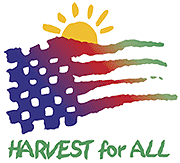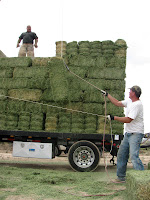So, it is time to start prepping for the 2010 Nevada State Farm Bureau Meeting, and one of the biggest parts of this meeting for YF&R members is the DISCUSSION MEET! But, I know that a lot of you are probably wondering what exactly the Discussion Meet actually is and WHY you should get involved in it.
Well, let me give you a few EASY incentives:
$500 for 1st Place
$250 for 2nd Place
$100 for 3rd Place
Hmmmm, still need another? How about this:
An all-expense paid trip to compete at Nationals if you win at state:
Atlanta, Georgia--Jan. 9-12, 2011
(for non-collegiate winner)
Orlando, Florida--Feb 5-7, 2011
(for a collegiate level winner)
Oh, and there are a few prizes to be won at nationals, too, like:
Scholarships for Collegiate winners
Ram Pick-up Trucks for Non-collegiate
So, now that you know about those incentives, let me tell you about the rest! In 2006 a good friend of mine told me that she thought I should compete in a Farm Bureau competition that she had be involved in the year before--which she had ended up winning at the state level and gone on to compete nationally in Branson, Missouri. The week before state meeting, Heather Center, the current YF&R chair, brought me the Discussion meet questions for that contest and finished convincing me to give it a try. At the NVFB State meeting that fall in Tonopah, I competed, placing first from the small group that we had that day. This took me on to Nationals in Salt Lake City, where I followed in Heather's footsteps, competing through to the Sweet Sixteen, before being eliminated. Through the Discussion Meet, I was introduced to Farm Bureau, to the YF&R program, and four years later I am doing all I can to keep the program alive in Nevada and introduce it to others who feel the same way about agriculture as I do. Read on for more.
Discussion Meet 2008--Yerington, Nevada
The Discussion Meet gives us an opportunity to discuss important agriculture topics in a Board meeting setting. There are anywhere from 4 to 6 competitors in an event that lasts almosts 30 minutes. There is a room monitor, 3 judges, a timer, and a moderator, at the table with the contestants to oversee the running of the event. The discussion meet in Yerington was the largest in years, with eight people, and as such was a pretty exciting thing for us. We had to do two rounds in order to narrow down to the final four competition.
Charlie Mann went on to place first in the contest. With Lee Mathews taking 2nd, as he had the year before in Mesquite.
Charlie Mann Competes at Collegiate Contest--Sacramento, 2009
Jimmy Lotspeich Competes at Collegiate Contest-- Tulsa, 2010
Both Jimmy and Charlie were former State FFA Officers who came to our state meetings and got involved and have continued their involvement in YF&R since.
So, here are the questions that will be used at the state meeting, with one change--there have usually only been FOUR questions, and so it is a given that each topic will be used at nationals in the four-round event, but now there is a fifth, so there are no guarantees as to which question will be drawn at each round. The important thing is to understand a few important aspects of each question and to be willing to listen, learn, question, and cooperate in order to discuss the topic efficiently with those you will be competing against.
2011 Discussion Meet Questions
1- Farm Bureau is the leading voice for agriculture but not the only voice. How do we encourage other agricultural groups to work together for the common good of our industry?
2- Government has always been involved in agriculture. Is the current level of government involvement a net hindrance or a net benefit to agriculture?
3- How will food movements such as “foodie” and “locavore,” which are focused primarily in urban centers, influence national agricultural production and federal programs?
4- Has technology become essential for American farmers? Should Farm Bureau influence and encourage all generations of farmers, ranchers and agriculturalists to embrace technological opportunities?
5- Given recent challenges, such as volatile food prices and limited world food supplies, do American consumers adequately appreciate the importance of US-produced food? Will American consumers consider American agriculture important to our security in the future?
If you are interested in being involved in this contest, the following helps and information are good places to start to gain more knowledge in the areas of these 5 questions:
1. FARM BUREAU IS THE LEADING VOICE FOR AGRICULTURE BUT NOT THE ONLY VOICE. HOW DO WE ENCOURAGE OTHER AGRICULTURAL GROUPS TO WORK TOGETHER FOR THE COMMON GOOD OF OUR INDUSTRY?
· Advocates for Ag
o http://www.blogger.com/goog_1885938088
o http://www.advocatesforag.blogspot.com/
· Feedstuffs Foodlink
o http://feedstuffsfoodlink.com/ME2/Default.asp
· Conversations on Care
o http://www.conversationsoncare.com/about-us.aspx
· Your Agriculture
o http://www.fb.org/index.php?fuseaction=yourag.home
· “To underestimate ag is a big mistake”, by Steve Kopperud, Feedstuffs, April 2009
o http://www.maninnature.com/Management/Farming/Farm1e2.pdf
2. GOVERNMENT HAS ALWAYS BEEN INVOLVED IN AGRICULTURE. IS THE CURRENT LEVEL OF GOVERNMENT INVOLVEMENT A NET HINDRANCE OR A NET BENEFIT TO AGRICULTURE?
· Farm Policy Facts
o http://www.farmpolicyfacts.org/
· “Federal Funding in Rural America Goes Far Beyond Agriculture” USDA-ERS , Amber Waves, March 2009
o http://www.ers.usda.gov/AmberWaves/March09/Findings/RuralFederalFunding.htm
· “The Post-Buyout Experience: Peanut and Tobacco Sectors Adapt to Policy Reform” USDA-ERS November 2009
o http://www.ers.usda.gov/publications/eib60/
3. HOW WILL FOOD MOVEMENTS SUCH AS “FOODIE” AND “LOCAVORE” WHICH ARE FOCUSED PRIMARILY IN URBAN CENTERS, INFLUENCE NATIONAL AGRICULTURAL PRODUCTION AND FEDERAL PROGRAMS?
· “2010 foodservice trends highlight local, healthy food”, The Packer, December 21, 2009
o http://thepacker.com/2010-foodservice-trends-highlight-local--healthy-food/Article.aspx?articleid=969685&authorid=351&feedid=215&src=search
· Community Gardens- Texas A & M University
o http://aggie-horticulture.tamu.edu/Kinder/commun.html
· “Sustainability, Local Sourcing and Nutrition Top List of Hottest Menu Trends for 2010”, NRA press release
o http://www.restaurant.org/pressroom/pressrelease.cfm?ID=1866
· “Consumers choose locally grown and environmentally friendly apples”, Univ. of Illinois, November 2009
o http://www.ace.illinois.edu/pdfs/mazzocco_jfdr.pdf
4. HAS TECHNOLOGY BECOME ESSENTIAL FOR AMERICAN FARMERS?
· Precision Paybacks? Farm Futures magazine, October 2009
o http://magissues.farmprogress.com/FFU/FF10Oct09/ffu10.pdf
· “Where Tech is headed”, Farm Journal Farm Machinery Guide
o http://www.agweb.com/FarmJournal/machinery/Default.aspx
· “Broadband Internet’s Value for Rural America”, USDA,ERS August 2009
o http://www.ers.usda.gov/publications/err78/
· “Internet Access and Internet Purchasing Patterns of Farm Households”, Agricultural and Economic Resource Review, October 2009
o http://ageconsearch.umn.edu/bitstream/55545/2/mishra%20-%20current.pdf
5. GIVEN RECENT CHALLENGES, DO AMERICAN CONSUMERS ADEQUATELY APPRECIATE THE IMPORTANCE OF U.S.-PRODUCED FOOD?
· “The Omnivore’s Delusion: Against the Agri-intellectuals” by Blake Hurst, The American, July 2009
o http://american.com/archive/2009/july/the-omnivore2019s-delusion-against-the-agri-intellectuals
· The Hand That Feeds Us
o http://www.thehandthatfeedsus.org/index.cfm
· America’s Heartland
o http://www.americasheartland.org/
· Center for Food Integrity
o http://www.foodintegrity.org/index.php
This year’s Nevada Contest will be at our NVFB State Annual Meeting, Winnemucca Convention Center, preliminaries beginning around 4:00pm Friday, November 19, 2010. There will be a YF&R Social following, and a YF&R sponsored breakfast at 7:30 a.m. on Saturday, November 20.
We’re looking forward to a great DM contest in November.
FYI- In addition to the Discussion Meet Contest we also have the “Achievement Award” and the “Excellence in Agriculture” Award. These are open to YF&R individuals or married couples, 18-35. While both contests emphasize leadership at all life and experience levels the first also emphasizes production agriculture skills with a majority of income subject to normal production risks; the “Excellence” award focuses on contributions to agriculture organizations and allied agricultural industries. The applications for these awards are available now for prospective contestants to use as guidelines in getting ready to compete now or in the future. Deadlines to submit applications for either of these awards in any year have been set for pre-submission review on or about September 15th and final draft submission by November 1st of any given year.
Email me if you are interested or want to know more!!!!!


















